The TRUE story behind Kevin Bacon’s Footloose: Inside the Oklahoma town that BANNED dancing for 82 YEARS in a bid to crack down on drunken antics and ‘satanic’ worship – before an uprising from high school teens finally saw it overturned
Footloose captivated viewers from the moment it hit the screens thanks to its fancy footwork and popular tunes.
The 1984 release saw Kevin Bacon take on the role of a teenager who experiences quite a culture shock after moving from the big city of Chicago to a small town in rural Southeast Texas.
He attempts to overturn a ban on dance and rock music, instituted through the efforts of a local minister, played by John Lithgow, before successfully organizing a ball.
But how many Footloose fans know that the film was actually inspired by a real city?
Elmore City, Oklahoma, had banned dancing starting in 1898 in an effort to control the amount of alcohol consumed and the drunken antics that accompanied it.
Shockingly, the ban was not lifted until 1980 after the city’s high school students protested because they were not allowed to dance.
As Footloose celebrates the 40th anniversary of its release on February 17, FEMAIL takes a look at the true story behind the blockbuster.
Footloose, starring Kevin Bacon, captivated viewers from the moment it hit the screens thanks to its fancy footwork and popular tunes
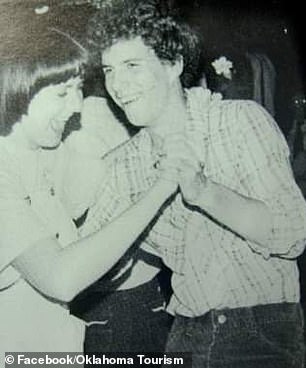

Elmore City, Oklahoma, had banned dancing from 1898 before finally hosting its first prom (left) 82 years later – it was the inspiration behind the blockbuster (right)
Elmore City is an agricultural and oilfield town with a current population of over 700.
But before statehood, a strict law was passed banning public dancing within city limits in an effort to stamp out the revelry.
The movement was led by a local minister who viewed the practice as satanic worship – and would persist for 82 years, through 15 presidencies.
But things all changed during the 1979/1980 school year, when students started getting itchy feet.
Members of the lower class, who were responsible for planning the annual dance-free banquet, wanted to change the law.
“We just wanted to dance in a safe place,” class member Mary Ann Temple-Lee said earlier Oklahoma Gazette. “So we put together a plan to make it a win-win situation.”
But it wasn’t all smooth sailing, as much of the resistance to reversing the ban came from the clergy.
Rex Kennedy and Leonard Coffee, school party organizers and junior class officers, told the newspaper: “We were told the school board was afraid things would get out of hand, so they convicted us before we ever did anything wrong.” .
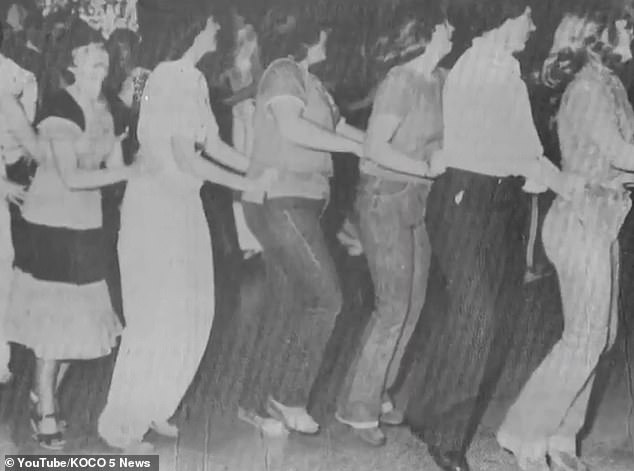
In the aftermath, the students (pictured at the ball) were ‘ecstatic’ and ‘excited as hell’, as one added: ‘We were all very proud of them for taking a stand. It was just time’
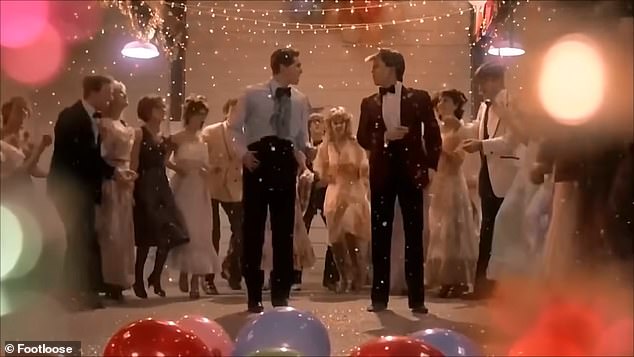
In the film, which was later remade in 2011, lead actor Ren McCormack gave a climactic speech to the school board, telling the town elders, “There was a time before this law, but no more.” Look, this is our time to dance’
“Living in the Bible Belt, I understood their position, but I didn’t see why that would stop those of us without religious beliefs from dancing.
“But once we all started talking, we got support from several teachers and our sponsors, and it just snowballed from there.”
The city was left bitterly divided.
One of the most vocal against lifting the ban was Rev. F. R. Johnson of the United Pentecostal Church in the nearby town of Hennepin.
‘Nothing good ever came from a dance. “If you have a dance, someone will crush it and they will only pay attention to two things: women and booze,” he said.
‘When boys and girls hold each other, they become sexually aroused. You can believe whatever you want, but one thing leads to another.’
However, the students were undeterred and took the issue to the five-member Elmore City school board.
In the film, which was later remade in 2011, lead actor Ren McCormack gave a climactic speech to the school board, telling the town elders, “Ecclesiastes assures us that there is a time for every purpose under heaven.” A time to laugh and a time to cry. A time to mourn, and a time to dance.
‘And there was a time before this law, but not anymore. Look, this is our time to dance.”
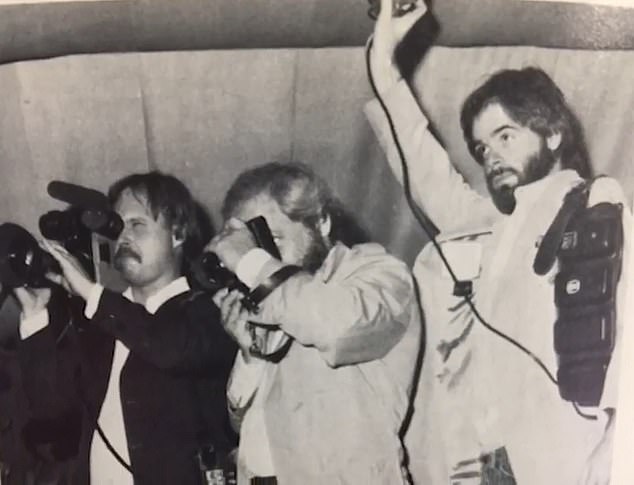
The overturning of the ban attracted media attention from across the US and beyond – as camera crews flocked to the now infamous prom.
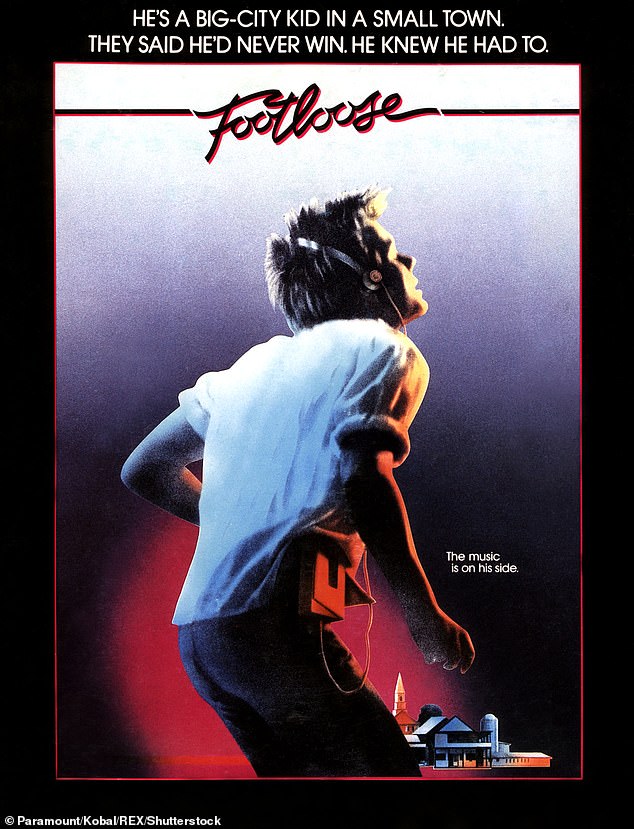
Footloose, which had the working title Cheek To Cheek, soon went into production in Provo, Utah, on a budget of $8 million – and made 10 times that amount at the box office.
In real life, the initial count came down to two for and two against – until Raymond Lee, board chairman and local rancher who was also Mary Ann Temple-Lee’s father, cast the deciding vote.
He simply stated, “Let them dance.”
In the aftermath, students were ‘ecstatic’ and ‘excited as hell’, as one added: ‘We were all very proud of them for taking a stand. It was just time.’
The overturning of the ban attracted media attention from across the US and beyond, as camera crews flocked to the now infamous prom.
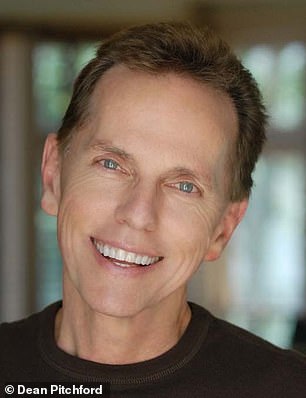
The story of Elmore City caught the attention of American screenwriter Dean Pitchford
It even caught the attention of American screenwriter Dean Pitchford.
The creative, who won the Academy Award and Golden Globe for best original song around the same time for writing Fame’s title track, headed to Elmore City for a week.
He collected real-life testimonies that ultimately formed the basis for his screenplay for Footloose, for which he subsequently co-wrote every song on the soundtrack.
The curious name Ren originated as a fusion of the first names of Rex and Leonard.
Footloose, which had the working title Cheek To Cheek, soon went into production in Provo, Utah, on a budget of $8 million – and made ten times that amount at the box office.
Elmore City never saw the profits of the big hit, but it didn’t shy away from its legacy.
In 2010, the city made national headlines again by recreating the infamous prom on its 30th anniversary.
And just a year later, the city hosted its first Footloose Festival, which has since become an annual tradition – packed with activities including a pancake breakfast, 5K run and car show.
